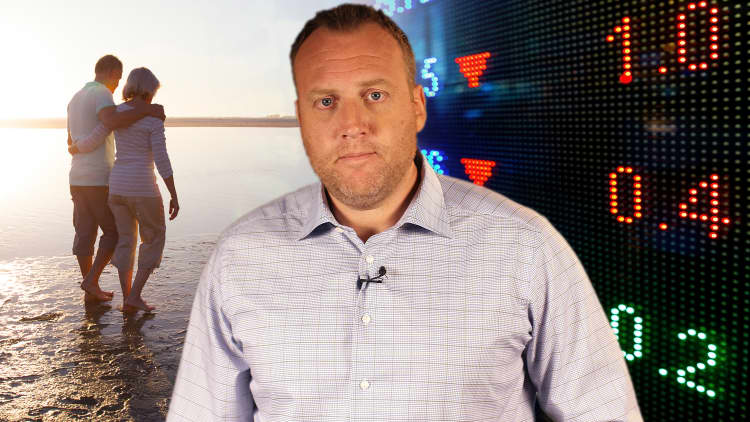
One of the biggest misunderstandings about investing is the role that volatility plays in your portfolio.
Too much volatility, and you're likely to panic and make disastrous decisions during the market's roughest environments. Not enough volatility and you're probably not taking enough risk to earn the returns you'll need for later.
It's counterintuitive to think about volatility as your portfolio's best friend, but once you switch your mindset over to doing so, you'll become a much stronger and better equipped investor.
Let's start with the undeniable, incontrovertible fact: Risk and reward are inextricably linked. This is why stocks have returned almost double what bonds have returned over the last seven decades in the post-WWII era. This is in both nominal and real (adjusted for inflation) terms.
Stock investors are taking more risk of drawdowns and volatility than investors in Treasury bonds, and the market's way of compensating them for that risk is long-term returns that are substantially higher. But they're not free. Investors must endure much greater uncertainty in the stock market as the price of this outperformance.
The right portfolio strategy is typically a mixture of enduring uncertainty for high returns and enjoying less uncertainty but lower returns. A financial plan can help you figure out what blend makes the most sense given your long-term goals and short-term needs.
Let's also consider the fact that Wall Street makes most of its money convincing investors that they can either completely contain risk or even remove it from the equation. This is very difficult to do and most investors who attempt it end up disappointed with the results. Some version of risk must always be endured in the pursuit of returns. Risk cannot be eliminated, it can only be transformed into a different type of risk.
Speaking of risk, one of the biggest problems with the way investors think about volatility is that they equate it with risk. But seeing price fluctuations in the short term only feels like risk. It only becomes a real risk if investors act on these feelings, making buy and sell decisions to alleviate mental anguish today at the expense of tomorrow.
For most individual investors, the real risk is not saving enough and not having it grow enough to cover future expenses during retirement.
If running out of money is the true risk, then anything you do today that reduces your probability of growing your nest egg is causing that risk. This means not having enough exposure to stocks while you're young, working and able to replace lost income.
The most important lesson I've ever been taught is that you're going to have financial risk regardless, so when do you want it? You want it early, and not late, in your lifetime.
Risk is the source of long-term investment returns. Being able to bear the volatility that so many others can't sets you up to reap the rewards that risk-averse investors have taken themselves out of the running for, by swinging to cash or fleeing into Treasury bonds or hedging away all of their potential upside.
Don't take yourself out of the running. Stay in the game and remind yourself why you're playing in the first place.
More from Invest in You:
- The best ways to save and spend money in your 20s and 30s, according to financial historian Niall Ferguson
- Financial lessons a mother of two learned after an unimaginable loss
- Two simple insurance charges to understand with health coverage
Check out 4 Money Lessons Everyone Should Know by Age 25 via Grow with Acorns+CNBC.
Disclosure: NBCUniversal and Comcast Ventures are investors in Acorns.






